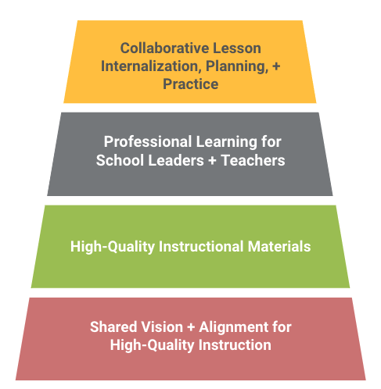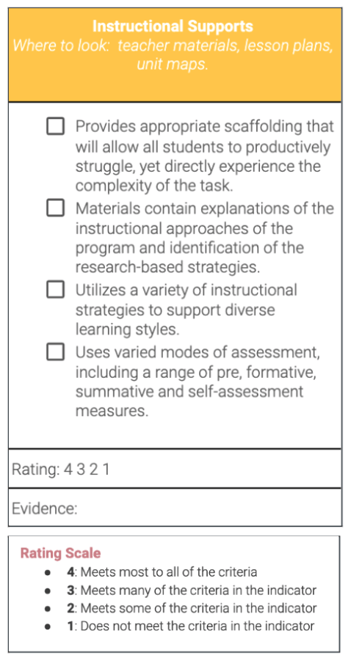
Narrowing the Focus when Selecting HQIM
When teachers don’t have access to strong materials, they search for them often online, leading to inconsistent quality and weak alignment to the standards. In fact, some have found that teachers spend 7-12 hours per week searching for and creating instructional resources.
Having equitable access to high quality materials is crucial to student achievement (see the blog: Solving Curricular Challenges: Driving Change through a Clear Vision). Knowing this, and knowing that teachers are inclined to spend time searching for materials, we believe educators can leverage a range of tools and frameworks in order to choose high quality instructional materials (HQIM) for their districts, schools and students.

Alignment to State Standards
Focus first on the core components - what are the questions, tasks, and texts that teachers and students will be engaging with everyday? Full alignment to the depth and rigor of the state standards should be non-negotiable, but other components/features might be more or less important depending on your specific students and context.
One place to start is by leveraging a trusted source. At Education Elements we start with EdReports reviews. EdReports does not make recommendations or suggest which curriculum is “better” than the other. This is because what is “better” for one student, teacher, or district can depend greatly on the local context. But by starting with trusted independent reviews schools and districts are empowered with a starting point to choose the best curricula to meet their local needs.
Supportive of Local Context
We also know there are unique needs and desires when choosing a curriculum. It’s important to note that different indicators and criteria may matter more or less to districts, including, but not limited to, the quality and amount of professional support, and the current student learning results.
Educators should consider the following when providing teachers with HQIM:
- Which stakeholders should be involved in the review and evaluation process? to what extent?
- What is the unique context of our schools, teachers, and students that would impact teaching with HQIM?
- Which contextual elements have the greatest impact?
- What are the key components that we want to make sure are addressed?

Review
Once you’ve considered both a trusted review report and local context, you’ll want to narrow the list to a few options and reach out to publishers to review online and print options and supplemental materials before making a final decision. We also recommend reviewing the materials across a number of dimensions with a review team, and aligning with the team on the meaning of the questions and scale. Here's a sample of the review question and ratings scale.
Overall, selecting HQIM is critically important but it is only one piece of the puzzle towards providing all students with equitable access to standards-aligned instruction.


.png)